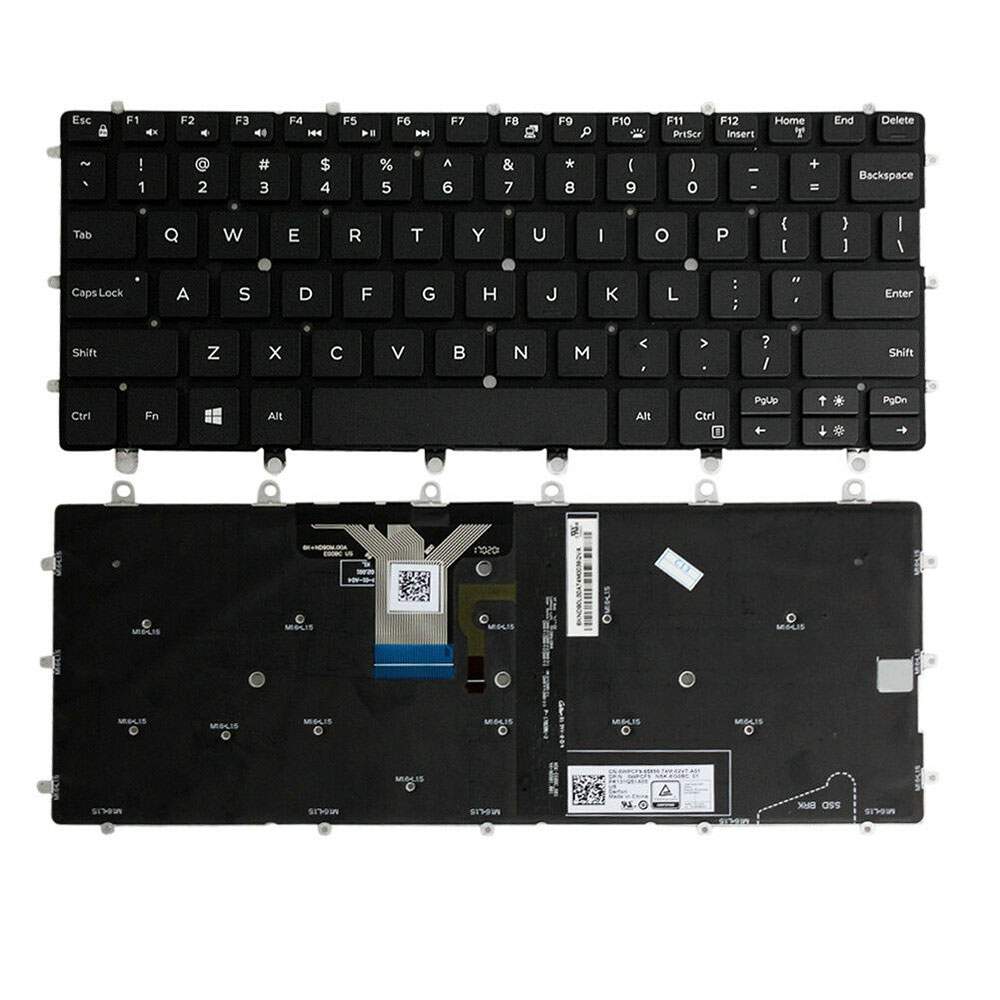
FITS THE FOLLOWING DEVICES:
Description: New English keyboard For Dell XPS 13 9365 XPS13 Backlit 0WPCF9 NSK-EG NO FRAME
PK131QS1A00 NSK-EG0BC 0WPCF9 9Z.ND9BC.001
Condition: NEW and Brand
Layout:US English Keyboard as picture show
Color:Black
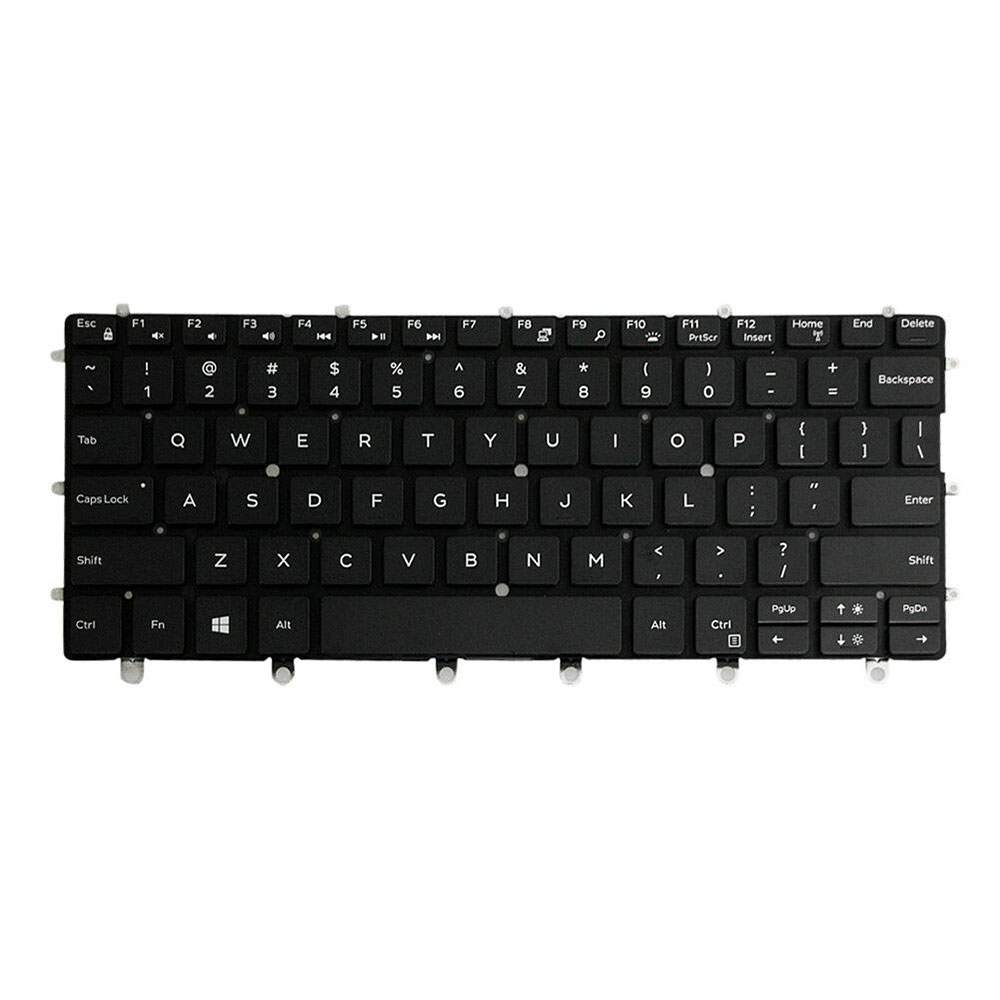
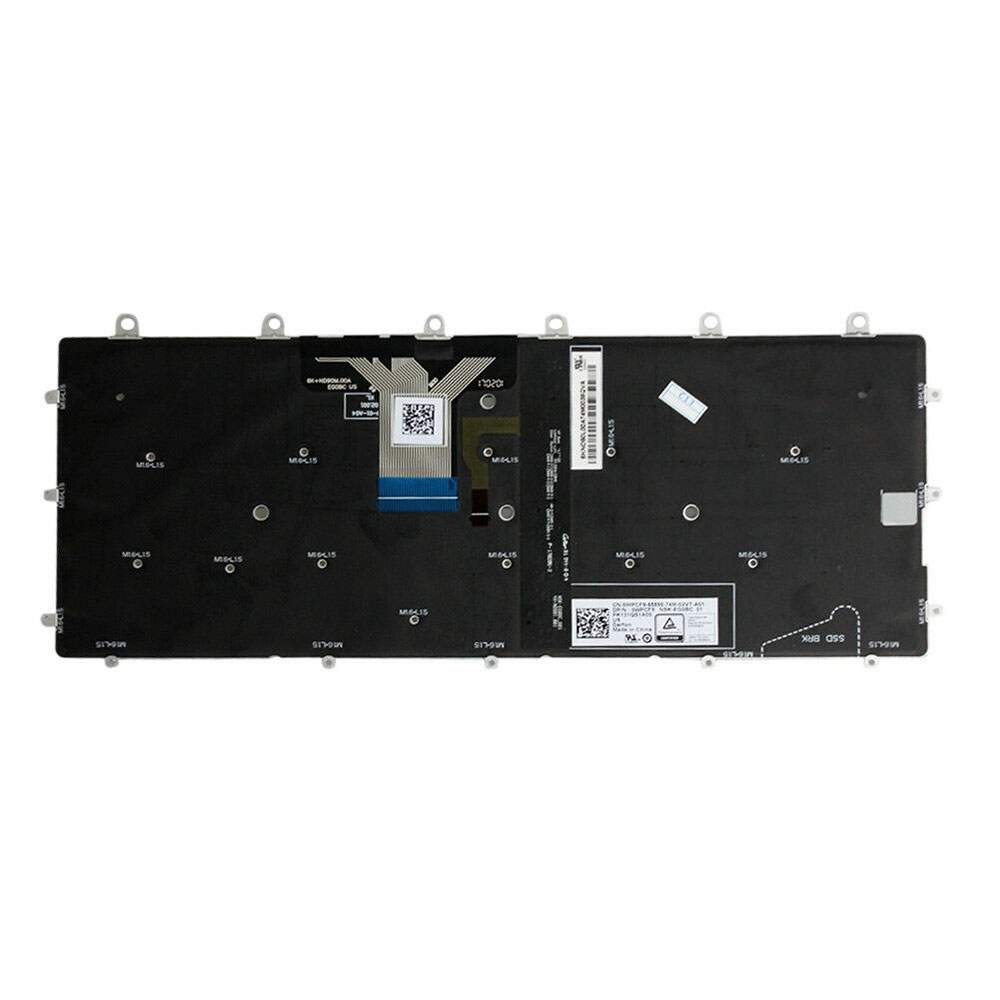
Just another WordPress site
Find the right battery for Lenovo Series to solve your power issues. Our LENOVO BSNO3372D8 batteries are manufactured to precisely fit just as your original battery.
We use the highest quality Li-ion cells and components that are lighter weight, charge faster and last longer.
US LENOVO battery shop – Tech-Battery.com ! Shopping with us is safe and secure! 100% Guarantee Quality and Fully Test!
LENOVO BSNO3372D8 Battery For LENOVO – Battery For LENOVO Tablet Li-ion 9000mAh/33.3WH 3.7V/4.2V. Browse our various categories and find out why we have been the go-to source for our customers.
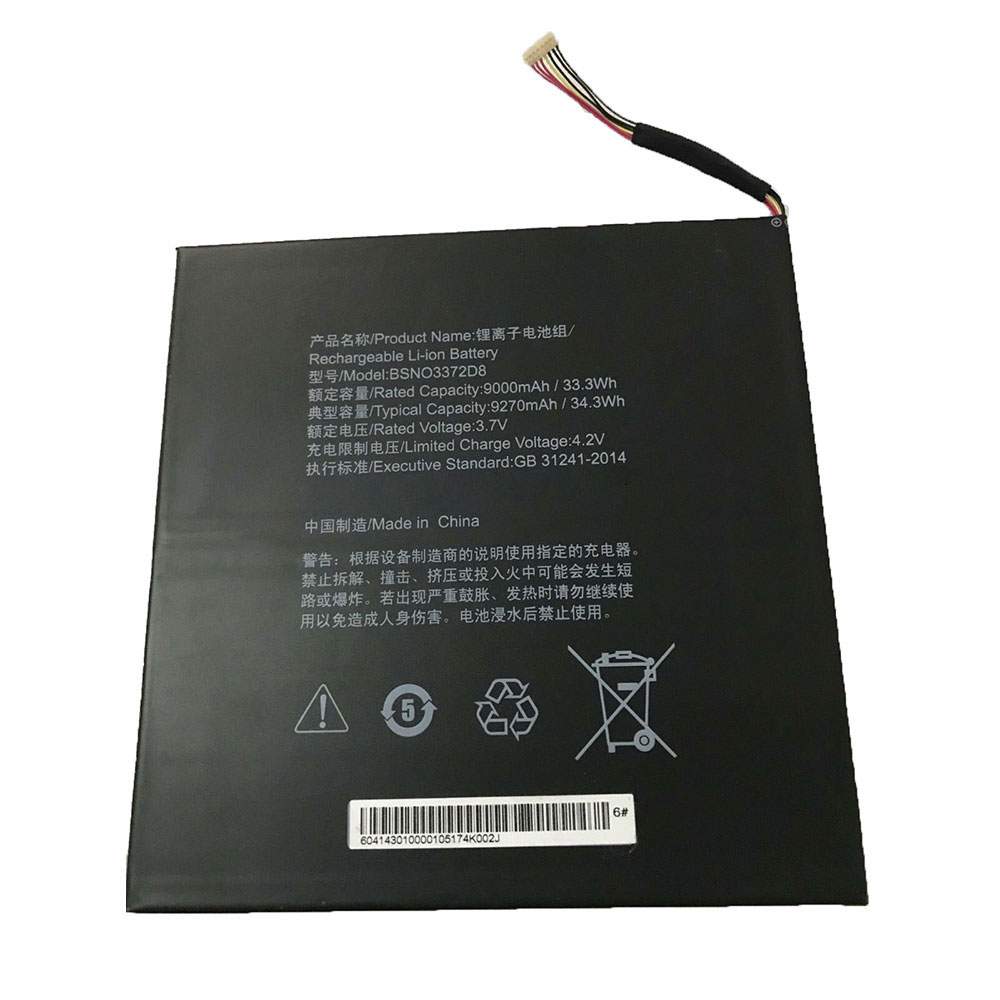

Free shipping in most countries. click here to view detailed shipping costs.
We ship to the worldwide,please enquiry shipping & handling if you are out of united states.
What’s the total delivery time? (please use this formula to determine when your order will arrive) total delivery time = packaging time + shipping time.
Lenovo Series
LENOVO BSNO3372D8 LENOVO battery is replacement for Lenovo Series. The BSNO3372D8 batteries equivalent is guaranteed to meet or exceed LENOVO original specifications. All LENOVO BSNO3372D8 Battery are brand new, 1 year Warranty, 100% Guarantee Quality and Fully Test!
We deliver quality LENOVO Tablet extended batteries online. Purchase your LENOVO Tablet battery here.
The performance of your LENOVO depends largely on the performance of your battery. And his time of life depends on its users, and that you are. These are the principles that have guided the LENOVO , at the head, so you can optimize the performance of LENOVO Tablet battery.
New battery still fully charged BSNO3372D8 sold. You must be on the first wheel to be conditioned for optimum performance. Loading and unloading of the battery 4 or 5 times is enough to determine.
The memory effect completely to avoid a full charge and discharge the battery, LENOVO BSNO3372D8 twice a month.
The dirt on the LENOVO BSNO3372D8 contacts of the battery can power the LENOVO Tablet batteries. Clean with alcohol and cotton can look like and function like new.
This method is recommended for those using the AC adapter for long periods. We recommend that you use the LENOVO BSNO3372D8 battery at least once in two weeks. Batteries lose its charge when stored for a long time and you need the battery if it does break.
If he does not use a length of time, the LENOVO BSNO3372D8 battery will be stored protected from a clean, dry and cool, heat and other metals. A loss of business to charge the battery in time and need a break before reuse.
Power Management Features Battery BSNO3372D8 enable the conservation of energy in the battery of LENOVO Tablet. You can control the speed of the processor off, or you can adjust the brightness of the LCD screen to a minimum to ensure low power consumption.
We stock a wide range of rechargeable batteries for LENOVO Tablet. Your LENOVO Tablet PC is part of your everyday life. Successful communications on a LENOVO begin with your battery. When purchasing a replacement battery for your LENOVO LENOVO, dependability and price are what we have to offer. We’ve been supplying reliable, high quality LENOVO batteries for over 10 years. Our goal is to provide high quality aftermarket replacement batteries at a very reasonable price. All of our rechargeable Li-Ion LENOVO batteries are backed by a one year warranty.
LENOVO batteries have two main ratings on them: Volts and Amperes. Because size and weight of batteries is limited when compared to larger batteries such as car batteries, most companies show their ratings with Volts and Milliamperes. One thousand Milliamperes equals 1 Ampere. When buying a battery, select batteries with the most Milliamperes (or mAh). Batteries are also rated by Watt-Hours, perhaps the simplest rating of all. This is found by multiplying the Volts and the Amperes together. For example:
Watt-Hours signifies the energy needed to power one watt for one hour.
Find the right battery for lenovo Yoga Tablet 8 Pad B6000 B6000-H B6000-F to solve your power issues. Our LENOVO L13C2E31 batteries are manufactured to precisely fit just as your original battery.
We use the highest quality Li-ion cells and components that are lighter weight, charge faster and last longer.
US LENOVO battery shop – Tech-Battery.com ! Shopping with us is safe and secure! 100% Guarantee Quality and Fully Test!
LENOVO L13C2E31 Battery For LENOVO – Battery For LENOVO Tablet Li-ion 5800mAh/21.8WH 3.75V. Browse our various categories and find out why we have been the go-to source for our customers.
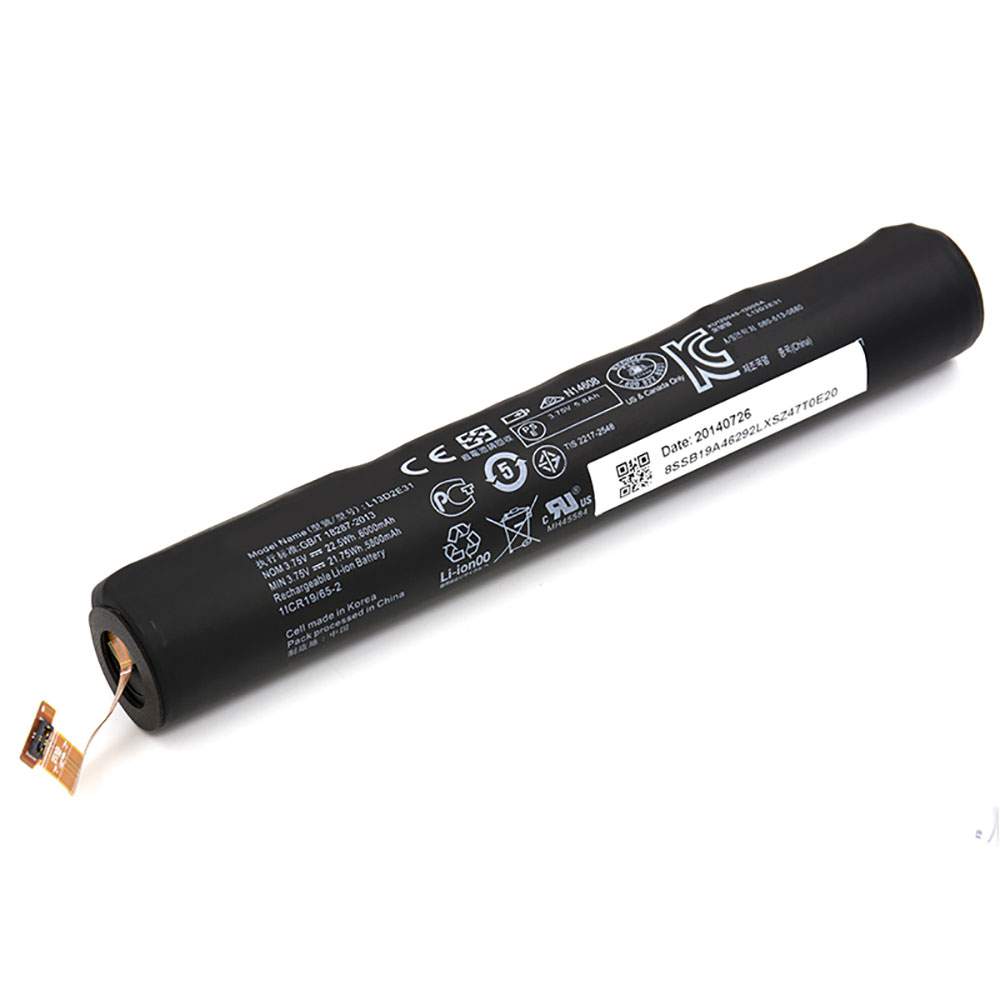

Free shipping in most countries. click here to view detailed shipping costs.
We ship to the worldwide,please enquiry shipping & handling if you are out of united states.
What’s the total delivery time? (please use this formula to determine when your order will arrive) total delivery time = packaging time + shipping time.
lenovo Yoga Tablet 8 Pad B6000 B6000-H B6000-F
LENOVO L13C2E31 LENOVO battery is replacement for lenovo Yoga Tablet 8 Pad B6000 B6000-H B6000-F. The L13C2E31 batteries equivalent is guaranteed to meet or exceed LENOVO original specifications. All LENOVO L13C2E31 Battery are brand new, 1 year Warranty, 100% Guarantee Quality and Fully Test!
We deliver quality LENOVO Tablet extended batteries online. Purchase your LENOVO Tablet battery here.
The performance of your LENOVO depends largely on the performance of your battery. And his time of life depends on its users, and that you are. These are the principles that have guided the LENOVO , at the head, so you can optimize the performance of LENOVO Tablet battery.
New battery still fully charged L13C2E31 sold. You must be on the first wheel to be conditioned for optimum performance. Loading and unloading of the battery 4 or 5 times is enough to determine.
The memory effect completely to avoid a full charge and discharge the battery, LENOVO L13C2E31 twice a month.
The dirt on the LENOVO L13C2E31 contacts of the battery can power the LENOVO Tablet batteries. Clean with alcohol and cotton can look like and function like new.
This method is recommended for those using the AC adapter for long periods. We recommend that you use the LENOVO L13C2E31 battery at least once in two weeks. Batteries lose its charge when stored for a long time and you need the battery if it does break.
If he does not use a length of time, the LENOVO L13C2E31 battery will be stored protected from a clean, dry and cool, heat and other metals. A loss of business to charge the battery in time and need a break before reuse.
Power Management Features Battery L13C2E31 enable the conservation of energy in the battery of LENOVO Tablet. You can control the speed of the processor off, or you can adjust the brightness of the LCD screen to a minimum to ensure low power consumption.
We stock a wide range of rechargeable batteries for LENOVO Tablet. Your LENOVO Tablet PC is part of your everyday life. Successful communications on a LENOVO begin with your battery. When purchasing a replacement battery for your LENOVO LENOVO, dependability and price are what we have to offer. We’ve been supplying reliable, high quality LENOVO batteries for over 10 years. Our goal is to provide high quality aftermarket replacement batteries at a very reasonable price. All of our rechargeable Li-Ion LENOVO batteries are backed by a one year warranty.
LENOVO batteries have two main ratings on them: Volts and Amperes. Because size and weight of batteries is limited when compared to larger batteries such as car batteries, most companies show their ratings with Volts and Milliamperes. One thousand Milliamperes equals 1 Ampere. When buying a battery, select batteries with the most Milliamperes (or mAh). Batteries are also rated by Watt-Hours, perhaps the simplest rating of all. This is found by multiplying the Volts and the Amperes together. For example:
Watt-Hours signifies the energy needed to power one watt for one hour.
Find the right battery for lenovo Miix320-10ICR Miix325-10ICR Serie to solve your power issues. Our LENOVO BBLD3372D8 batteries are manufactured to precisely fit just as your original battery.
We use the highest quality Li-ion cells and components that are lighter weight, charge faster and last longer.
US LENOVO battery shop – Tech-Battery.com ! Shopping with us is safe and secure! 100% Guarantee Quality and Fully Test!
LENOVO BBLD3372D8 Battery For LENOVO – Battery For LENOVO Tablet Li-ion 9000mAh/33.3WH 3.7V/4.2V. Browse our various categories and find out why we have been the go-to source for our customers.
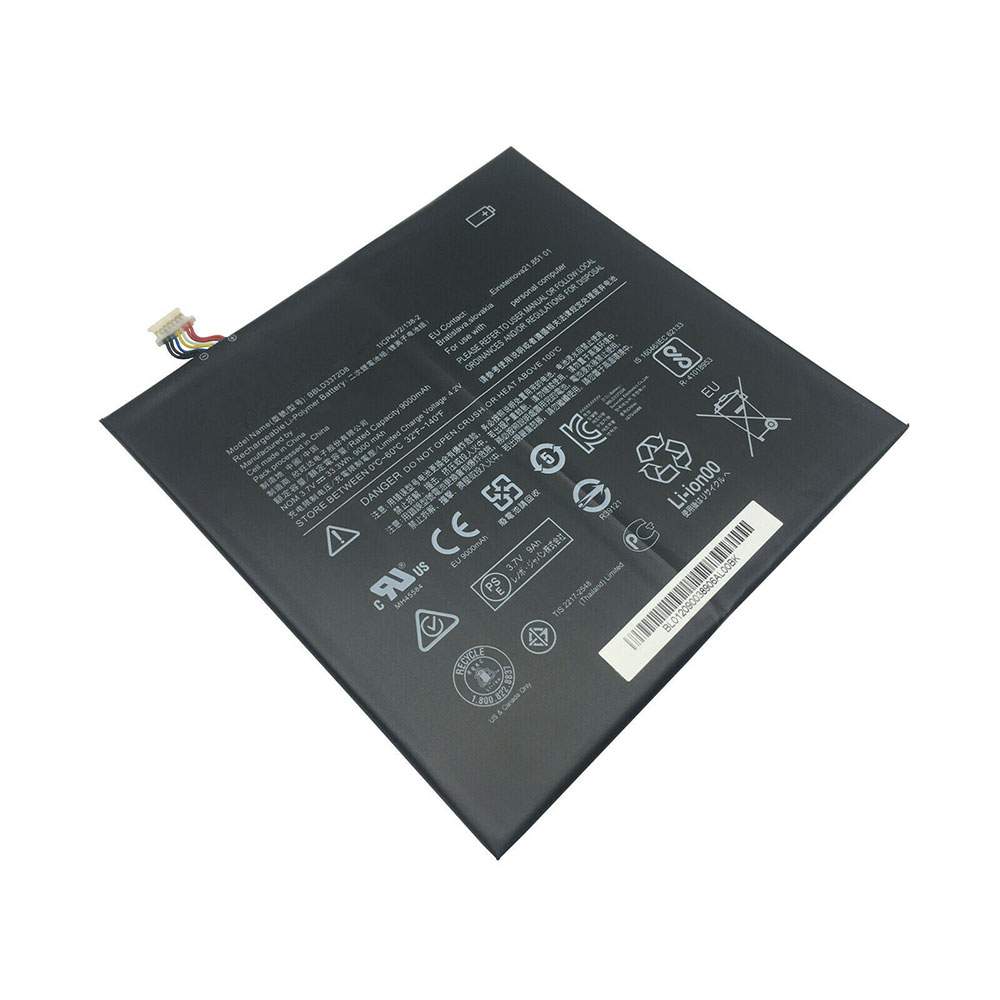

Free shipping in most countries. click here to view detailed shipping costs.
We ship to the worldwide,please enquiry shipping & handling if you are out of united states.
What’s the total delivery time? (please use this formula to determine when your order will arrive) total delivery time = packaging time + shipping time.
lenovo Miix320-10ICR Miix325-10ICR Serie
LENOVO BBLD3372D8 LENOVO battery is replacement for lenovo Miix320-10ICR Miix325-10ICR Serie. The BBLD3372D8 batteries equivalent is guaranteed to meet or exceed LENOVO original specifications. All LENOVO BBLD3372D8 Battery are brand new, 1 year Warranty, 100% Guarantee Quality and Fully Test!
We deliver quality LENOVO Tablet extended batteries online. Purchase your LENOVO Tablet battery here.
The performance of your LENOVO depends largely on the performance of your battery. And his time of life depends on its users, and that you are. These are the principles that have guided the LENOVO , at the head, so you can optimize the performance of LENOVO Tablet battery.
New battery still fully charged BBLD3372D8 sold. You must be on the first wheel to be conditioned for optimum performance. Loading and unloading of the battery 4 or 5 times is enough to determine.
The memory effect completely to avoid a full charge and discharge the battery, LENOVO BBLD3372D8 twice a month.
The dirt on the LENOVO BBLD3372D8 contacts of the battery can power the LENOVO Tablet batteries. Clean with alcohol and cotton can look like and function like new.
This method is recommended for those using the AC adapter for long periods. We recommend that you use the LENOVO BBLD3372D8 battery at least once in two weeks. Batteries lose its charge when stored for a long time and you need the battery if it does break.
If he does not use a length of time, the LENOVO BBLD3372D8 battery will be stored protected from a clean, dry and cool, heat and other metals. A loss of business to charge the battery in time and need a break before reuse.
Power Management Features Battery BBLD3372D8 enable the conservation of energy in the battery of LENOVO Tablet. You can control the speed of the processor off, or you can adjust the brightness of the LCD screen to a minimum to ensure low power consumption.
We stock a wide range of rechargeable batteries for LENOVO Tablet. Your LENOVO Tablet PC is part of your everyday life. Successful communications on a LENOVO begin with your battery. When purchasing a replacement battery for your LENOVO LENOVO, dependability and price are what we have to offer. We’ve been supplying reliable, high quality LENOVO batteries for over 10 years. Our goal is to provide high quality aftermarket replacement batteries at a very reasonable price. All of our rechargeable Li-Ion LENOVO batteries are backed by a one year warranty.
LENOVO batteries have two main ratings on them: Volts and Amperes. Because size and weight of batteries is limited when compared to larger batteries such as car batteries, most companies show their ratings with Volts and Milliamperes. One thousand Milliamperes equals 1 Ampere. When buying a battery, select batteries with the most Milliamperes (or mAh). Batteries are also rated by Watt-Hours, perhaps the simplest rating of all. This is found by multiplying the Volts and the Amperes together. For example:
Watt-Hours signifies the energy needed to power one watt for one hour.
Find the right battery for Lenovo E480 E580 R480 R580 to solve your power issues. Our lenovo L17L3P52 batteries are manufactured to precisely fit just as your original battery.
We use the highest quality Li-ion cells and components that are lighter weight, charge faster and last longer.
US lenovo battery shop – Tech-Battery.com ! Shopping with us is safe and secure! 100% Guarantee Quality and Fully Test!
lenovo L17L3P52 Battery For lenovo – Battery For lenovo laptop Li-ion 4.05Ah/45Wh 11.1V. Browse our various categories and find out why we have been the go-to source for our customers.
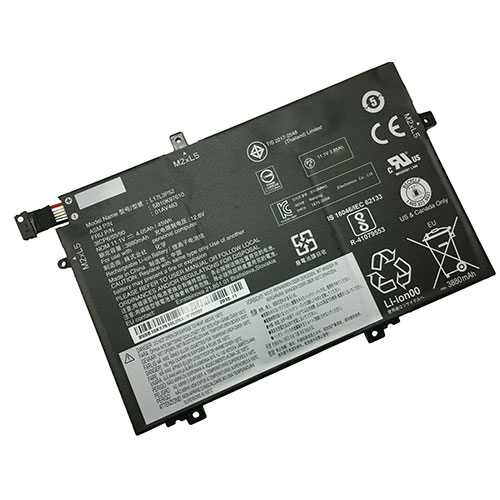

Free shipping in most countries. click here to view detailed shipping costs.
We ship to the worldwide,please enquiry shipping & handling if you are out of united states.
What’s the total delivery time? (please use this formula to determine when your order will arrive) total delivery time = packaging time + shipping time.
Lenovo E480 E580 R480 R580 E485 E585 Series
lenovo L17L3P52 lenovo battery is replacement for Lenovo E480 E580 R480 R580. The L17L3P52 batteries equivalent is guaranteed to meet or exceed lenovo original specifications. All lenovo L17L3P52 Battery are brand new, 1 year Warranty, 100% Guarantee Quality and Fully Test!
We deliver quality lenovo laptop extended batteries online. Purchase your lenovo laptop battery here.
The performance of your lenovo depends largely on the performance of your battery. And his time of life depends on its users, and that you are. These are the principles that have guided the lenovo , at the head, so you can optimize the performance of lenovo laptop battery.
New battery still fully charged L17L3P52 sold. You must be on the first wheel to be conditioned for optimum performance. Loading and unloading of the battery 4 or 5 times is enough to determine.
The memory effect completely to avoid a full charge and discharge the battery, lenovo L17L3P52 twice a month.
The dirt on the lenovo L17L3P52 contacts of the battery can power the lenovo laptop batteries. Clean with alcohol and cotton can look like and function like new.
This method is recommended for those using the AC adapter for long periods. We recommend that you use the lenovo L17L3P52 battery at least once in two weeks. Batteries lose its charge when stored for a long time and you need the battery if it does break.
If he does not use a length of time, the lenovo L17L3P52 battery will be stored protected from a clean, dry and cool, heat and other metals. A loss of business to charge the battery in time and need a break before reuse.
Power Management Features Battery L17L3P52 enable the conservation of energy in the battery of lenovo laptop. You can control the speed of the processor off, or you can adjust the brightness of the LCD screen to a minimum to ensure low power consumption.
We stock a wide range of rechargeable batteries for lenovo laptop. Your lenovo Tablet PC is part of your everyday life. Successful communications on a lenovo begin with your battery. When purchasing a replacement battery for your lenovo lenovo, dependability and price are what we have to offer. We’ve been supplying reliable, high quality lenovo batteries for over 10 years. Our goal is to provide high quality aftermarket replacement batteries at a very reasonable price. All of our rechargeable Li-Ion lenovo batteries are backed by a one year warranty.
lenovo batteries have two main ratings on them: Volts and Amperes. Because size and weight of batteries is limited when compared to larger batteries such as car batteries, most companies show their ratings with Volts and Milliamperes. One thousand Milliamperes equals 1 Ampere. When buying a battery, select batteries with the most Milliamperes (or mAh). Batteries are also rated by Watt-Hours, perhaps the simplest rating of all. This is found by multiplying the Volts and the Amperes together. For example:
Watt-Hours signifies the energy needed to power one watt for one hour.
Most of us have seen Venn diagrams where the circles don’t meet in the middle, with statement such as “Fast, Cheap, Stable” filling those circles. But what if you could have DDR4-3600 for only $15 more than competing mainstream DDR4-3200 kits? That’s what Team Group’s aims to deliver with its T-Force Dark-Z kit (model TDZGD416G3600HC18JDC01), a part number that’s improbably easy to decipher but impossibly difficult to remember.
Covered in aluminum heat spreaders stamped with a 3D design which oddly appears to minimize contact with the chips beneath, each kit includes a case badge and installation instructions. Anyone savvy enough to read this probably doesn’t need those instructions.
Concerning module programming, the good news is that this kit defaults to DDR4-2400 prior to setting XMP mode, where some competitors default to only DDR4-2133. A DDR4-2133 configuration is also available, if your system needs it.
The bad news: the 22-cycle tRCD and tRP of its DDR4-3600 XMP appears uncompetitive. Returning to the positive side, the 18-cycle CAS of this kit is good enough to at least call it “performance” RAM, since we define a “low latency” setting as less than 1 cycle for every 100 MHz frequency (200MHz data rate). If you need a refresher on what any of that means, you can check out the middle section of our PC Memory 101 feature.
Comparison Hardware
Teamgroup’s T-Force Dark-Z goes up against competing DDR4-3600 kits from Crucial’s Ballistix Gaming brand and Geil’s EVO series, mounted to MSI’s memory-mastering MEG X570 Ace and controlled by AMD’s stellar Ryzen 7 3700X. Toshiba’s OCZ RD400 512GB and Gigabyte’s GeForce RTX 2070 Gaming OC 8G push any system bottlenecks back towards the CPU and DRAM.
T-Force Dark-Z DDR4-3600 reached DDR4-4266 on our AMD platform at timings that were barely worse than rated XMP settings. But as great as that sounds, it still fell behind the two competing kits. Fortunately for Team Group,the company’s kit is also cheaper.
Lowest Stable Timings at 1.35V (Max) on MEG X570 ACE (BIOS 1.20)
Interestingly, the T-Sorce Dark-Z kit’s super-long XMP latencies aren’t nearly a requirement for the stability of our system. We pushed those all the way from 18-22-22-42 to 16-18-18-36 without issue. With CPU and GPU overclocking often delivering diminishing returns, it’s a shame that so few casual overclockers take the time to optimize their memory.
Benchmark Results
Bandwidth differences between these three kits are too small to cause most buyers to care at XMP settings, so they probably won’t care that the Dark-Z took third place. The same is true in Sandra Memory Latency.
T-Force Dark-Z also loses in most of our gaming tests, but again by margins that are too small to elicit a buy-or-deny response from most builders.
XMP performance losses in are slightly more noticeable in 7-Zip, but still not enough to make most buyers care. Heck, t0he T-Force kit even creeped up to second place when all three kits were tuned to their tightest stable timings.
The key to the T-Force Dark-Z’s marketing is that this memory is cheap enough to make cautious buyers question its quality, yetstill carries the same type of lifetime limited warranty that most of its competitors boast. Combining that low price with mediocre timings for its high data rate, we have no problem recommending it as a value pick for performance enthusiasts.
It’s beginning to look like a really interesting market. After years of essentially one player taking all the spoils, we now have a significant second that has the technology to make a difference.
The incumbent is of course Intel INTC, which just apologized to customers for continued supply constraints, despite double-digit growth in supply from the first half to the second while maintaining its raised guidance (fourth-quarter revenue of $19.2 billion and EPS of $1.28 and full-year revenue of $71 billion and EPS of $4.42).
Unanticipated increase in PC demand is not the only issue however. Intel is also trying to maintain 14nm production while ramping up 10nm. It’s building out capacity and one might argue why this wasn’t done before while there were all the product delays. But supply-demand parity hasn’t been achieved yet and management hasn’t said anything about when it will be. So that’s that.
On the other side, we have challenger Advanced Micro Devices AMD, which is announcing one breakthrough device after another, significant partnerships with companies like Alphabet’s GOOGL Google and Amazon AMZN and manufacturing alliances with leading edge foundry Taiwan Semiconductor TSM, which is making its 7nm chips.
It’s true that NVIDIA NVDA is also a player, but it doesn’t have x86 at the core and is instead focused on GPUs and the largescale parallel processing they enable. This is making waves at HPC and the data center in general (especially after the Mellanox acquisition). But NVIDIA doesn’t play in all the x86 categories like PCs, mobile computing and data center the way AMD does. So Intel and AMD are the main rivals.
Just for perspective, let’s see what the two companies brought in last quarter. Intel generated $19.19 billion in revenue and $1.42 in EPS (up $27 million and 2 cents a share, respectively, or more or less level with year-ago revenue and EPS in percentage terms). AMD brought in $1.80 billion in revenue and $0.14 in EPS (up $148 million (9.0%) and 4 cents a share (40%), respectively from last year).
So AMD’s revenue and per share earnings are about 9% of Intel’s, making it almost like a David-Goliath situation. Moreover, Intel has $12.025 billion on its balance sheet while AMD has a mere $1.209 billion. AMD also generates a small fraction of the cash flow that Intel does.
The difference in financial position between the two companies, despite the fact that AMD is growing much faster, means that Intel has significant resources to go into a very aggressive price war that AMD will find it harder to sustain. This can especially hurt the company as it preps to target mid and high-range segments (especially in mobile computing).
Intel will no doubt adopt this strategy as its design teams have fallen behind and semiconductor designs take years to develop, which is followed by qualifying the production process, ramping production and bringing to market. Intel being the foundry for its own chips has the added difficulty that it doesn’t rely on expertise that’s already available (it may however do this if necessary).
Intel’s management team is also not what it used to be. Given these difficulties and the fact that current management has admitted to a likelihood of share losses to AMD, all the traditional Intel partners have their Plan B, which is AMD. So they have at least some AMD-powered models and systems.
But what about the valuation? At 12.29X forward twelve months’ earnings, INTC shares are trading in a tight range, but below its median value over the past year. They’re also trading below the S&P 500’s 17.97X. So Intel shares are undervalued. AMD on the other hand is trading at 48.02X, which is close to the high end of the range over the past year, so it’s obviously overvalued.
That would be unless it consistently beats estimates over the next year by a significant margin. So for comparison, let’s take a look at its surprise history. The company has met estimated earnings in each of the last two quarters, it beat by 21% in the quarter prior to that and missed by 11% before that, averaging a 2.2% gain in the last four quarters. This doesn’t look too significant. If AMD doesn’t significantly top expectations in the next year, the current valuation looks untenable.
That’s why we have a Zacks Rank #3 (Hold) on AMD shares and a Zacks Rank #2 (Buy) on INTC shares. You can see the complete list of today’s Zacks #1 Rank (Strong Buy) stocks here.
By now, you’ve seen the word “Optane” bandied about on VentureBeat (such as here and here) and probably countless other places — and for good reason. Intel, the maker of all Optane products, is heavily promoting the results of its decade-long R&D investment in this new memory/storage hybrid. But what exactly is Optane, and what is it good for? (Hint: Massively memory-hungry applications like analytics and AI). If you’re not feeling up to speed, don’t worry. We’ll have you covered on all the basics in the next few minutes.
The bottom line
Optane is a new Intel technology that blurs the traditional lines between DRAM memory and NAND flash storage.
Optane DC solid state drives provide super-fast data caching and agile system expansion.
Capacity up to 512GB per persistent memory module; configurable for persistent or volatile operation; ideal for applications that emphasize high capacity and low latency over raw throughput
Strong contender for data centers; future for clients. Costs and advantages are case-specific, impacted by DRAM prices. Early user experience still emerging.
Now, let’s dive into some more detail.
Media vs. memory vs. storage
First, understand that Intel Optane is neither DRAM nor NAND flash memory. It’s a new set of technologies based on what Intel calls 3D XPoint media, which was co-developed with Micron. (We’re going to stumble around here with words like media, memory, and storage, but will prefer “media.”) 3D XPoint works like NAND in that it’s non-volatile, meaning data doesn’t disappear if the system or components lose power.
However, 3D XPoint has significantly lower latency than NAND. That lets it perform much more like DRAM in some situations, especially with high volumes of small files, such as online transaction processing (OLTP). In addition, 3D XPoint features orders-of-magnitude higher endurance than NAND, which makes it very attractive in data center applications involving massive amounts of data writing.
When combined with Intel firmware and drivers, 3D XPoint gets branded as simply “Optane.”
So, is Optane memory or storage? The answer depends on where you put it in a system and how it gets configured.
Optane memory
Consider Intel Optane Memory, the first product delivered to market with 3D XPoint media. Available in 16GB or 32GB models, Optane memory products are essentially tiny PCIe NVMe SSDs built on the M.2 form factor. They serve as a fast cache for storage. Frequently loaded files get stashed on Optane memory, alleviating the need to find those files on NAND SSDs or hard drives, which will entail much higher latency. Optane memory is targeted at PCs, but therein lies the rub. Most PCs don’t pull that much file traffic from storage and don’t need that sort of caching performance, And because, unlike NAND, 3D XPoint doesn’t require an erase cycle when writing to media, Optane is strong on write performance. Still, most client applications don’t have that much high-volume, small-size writing to do.
Optane SSDs: Client and data center
Next came Intel Optane SSDs and Data Center (DC) SSDs. Today, the Intel Optane SSD 8 Series ships in 58GB to 118GB capacities, also using the M.2 form factor. The 9 Series reaches from 480GB to 1.5TB but employs the M.2, U.2, and Add In Card (AIC) form factors. Again, Intel bills these as client SSDs, and they certainly have good roles to play under certain conditions. But NAND SSDs remain the go-to for clients across most desktop-class applications, especially when price and throughput performance (as opposed to latency) are being balanced.
Things change once we step into the data center. The SKUs don’t look that different from their client counterparts — capacities from 100GB to 1.5TB across U.2, M.2, and half-height, half-length (HHHL) AIC form factors — except in two regards: price and endurance. Yes, the Intel Optane SSD DC P4800X (750GB) costs roughly double the Intel Optane SSD 905P (960GB). But look at its endurance advantage: 41 petabytes written (PBW) versus 17.52 PBW. In other words, on average, you can exhaust more than two consumer Optane storage drives — and pay for IT to replace them — in the time it takes to wear out one DC Optane drive.
Optane DC Persistent Memory
Lastly, Intel Optane DC Persistent Memory modules (DCPMM) place 3D XPoint media on DDR4 form factor memory sticks. (Note: There’s no DDR4 media on the module, but DCPMMs do insert into the DDR4 DIMM sockets on compatible server motherboards.) Again, Optane media is slower than most DDR4, but not much slower in many cases. Why use it, then? Because Optane DCPMMs come in capacities up to 512GB – much higher than DDR4 modules, which top out at 64GB each. Thus, if you have applications and workloads that prioritize capacity over speed, a common situation for in-memory databases and servers with high virtual machine density, Optane DCPMMs may be a strong fit.
The value proposition for DCPMM was stronger in early 2018 and early 2019, when DRAM prices were higher. This allowed DPCMMs to win resoundingly on capacity and per-gigabyte price. As DRAM prices have plummeted, though, the two are at near-parity, which is why you now hear Intel talking more about the capacity benefits in application-specific settings. As Optane gradually proves itself in enterprises, expect to see Intel lower DCPMM prices to push the technology into the mainstream.
As for total performance, DCPMM use case stories and trials are just emerging from the earliest enterprise adopters. Intel has yet to publish clear data showing “Optane DCPMMs show X% performance advantage over DRAM-only configurations in Y and Z environments.” This is partially because server configurations, which often employ virtualization and cross-system load sharing, can be very tricky to typify. But it’s also because the technology is so new that it hasn’t been widely tested. For now, the theory is that large DCPMM pools, while slower than DRAM-only pools, will reduce the need for disk I/O swaps. That will accelerate total performance above and beyond the levels reduced by adopting a somewhat slower media.
Several Tiger Lake Y (TGL-Y) and Tiger Lake U (TGL-U) entries have started to appeared in the Geekbench 4 and SiSoftware databases. Tiger Lake is slated to debut next year to succeed Ice Lake (ICL).
Starting with the Geekbench 4 submission, the Tiger Lake Y sample checked in with a quad-core, eight-thread configuration and a 1.19 GHz base clock. This chip appears to be identical to the one that was spotted back in July. This time, however, we have more information on the cache configuration.
According to Geekbench 4’s listing, the quad-core Tiger Lake Y chip in question has 1.25MB of L2 cache per core and up to 12MB of L3 cache, which should equate to 3MB per core. In comparison, Ice Lake features 512KB of L1I cache and 2MB of L3 cache per core. However, Tiger Lake Y’s L1D and L1 cache design seems to remain unchanged. The sample shows 48KB of L1D cache and 32KB of L1I cache per core, the same as Ice Lake.
It’s already known that Tiger Lake processors will employ Intel’s Gen12 (Generation 12) graphics processing unit. The latest SiSoftware submissions give us a sneak peek of what we may be able to expect from Gen12 in terms of specifications.
The submissions both point to Gen12 sporting up to 96 Execution Units (EUs), which adds up to 768 shading units. As you may recall, Gen11 maxes out at 64 EUs so, we’re looking at a 50% increase.
The iGPU (integrated GPU) inside Tiger Lake Y appears to operate at 1.1 GHz, with the Tiger Lake U’s iGPU working at 1 GHz. This isn’t surprising, as Intel’s Y-series is confined to a lower TDP (thermal design power) than the U-series and doesn’t have as much room to breathe.
In other news, Linux publication Phoronix today uncovered Intel’s latest update to add 16-bit atomic operation support for its Tiger Lake processors. It’s safe to assume that Intel is working diligently on Tiger Lake for a 2020 release.
Google wants the future of email to be less static and more interactive. Its solution based on Accelerated Mobile Pages has found industry support, and “dynamic email” is now coming to Gmail for Android and iOS.
Instead of clicking links that open in a browser, dynamic emails let you interact with calendar invites, respond to questionnaires, and browse catalogs right from a message. One particularly interesting use case is commenting in a Google Docs thread right from the email notification already in your inbox.
This saves you from having to open the full app and lets you quickly return to triaging messages instead of getting distracted. Another part of dynamic email is making messages more current. For example, you could have up-to-date order statuses or the latest job listings every time you check.
After rolling out in July to Gmail on the web, Google is adding support to the Android and iOS apps. Starting today, it will begin rolling out to free consumer accounts and G Suite customers. It will be widely available over the next two weeks.
Yahoo Mail, Outlook.com, and Mail.Ru have also announced support. Besides Google Docs, other senders that support the interactive format include Booking.com, Despegar, Doodle, Ecwid, Freshworks, Nexxt, OYO Rooms, Pinterest, and redBus. Google reviews who can send dynamic emails through a registration program.
It first rolled out to Gmail on the web in March and came to G Suite accounts in July. End-users will have the option to disable in settings and stick with static email.